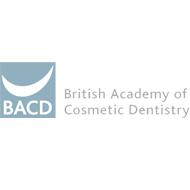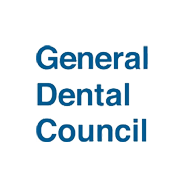Trigeminal neuralgia, also known as tic douloureux, is a rare facial pain that causes a sudden, brief but severe electric shock-like or stabbing pain on one side of the face. It is a rare disease affecting only about 0.17 per cent of the population. It tends to be more common in women than in men and usually affects people aged 50 and over.
The trigeminal nerve tells the brain that your face, jaws, gums, forehead and the area around your eyes have been touched or have experienced a temperature change, pain or pressure. The nerve also supplies the muscles that help move the jaw (but not the muscles that are responsible for facial expression). There are two trigeminal nerves, one on each side of the face, and each divides into three main branches like the roots of a tree. The areas that each branch receives signals from are broadly divided into lower jaw, upper jaw and eye and forehead.
Dentists cannot be absolutely sure what causes trigeminal neuralgia. It is not an infection and it cannot be passed on to anybody, nor is it thought to run in families.
The current theory for trigeminal neuralgia has been based on findings during operations. It is thought that the trigeminal nerve is damaged by a blood vessel pressing on it. It is made up of numerous different types of nerves (to detect touch, pain and pressure) and, rather like wires, they are insulated from each other by a substance called myelin. It has been suggested that this pressure of the blood vessel results in the insulation between the nerves being partially destroyed.
This allows the nerve that normally only transmits light touch to send impulses up the wrong nerve, that is, up the wrong wire, via nerves that transmit pain. Rarely, however, the pain can be due to a small mass pressing on the nerve or to multiple sclerosis, which tends to destroy the insulation between nerves.
The pain will be in one or both of the lower branches. Only about 3 per cent of patients will get pain on both sides and it is rare for the pain to be active on both sides of the face at the same time. The pain may be felt on the skin of the face or the inside of the mouth. Initially it may be thought to be a toothache.
The pain is a sudden, electric shock-like, jabbing or stabbing pain that lasts for seconds but which may be repeated in very quick time. The pain attacks may go on throughout the day and may last for days, weeks or months at a time but there may be periods when there is no pain for months or years.
There may be a specific area on your face or inside your mouth where the pain appears to start. This is called a trigger area. It may be found that various actions trigger the pains, such as lightly touching the skin on the side of your face, cold air or wind on your face, washing, shaving or even brushing your hair, eating, talking or brushing your teeth.
The pain can be extremely severe and disabling, preventing washing or shaving the affected side or applying make-up. It may stop the sufferer from eating during these periods because of the fear of triggering a painful attack. There may be a reluctance to brush the teeth on the affected side. Social activities will be restricted because eating in public becomes difficult and it may even lead to weight loss and depression.
Doctors try to prevent these complications from occurring by treating the condition promptly. A diagnosis of trigeminal neuralgia depends almost entirely on the description given by the patient to the doctor or dentist. The doctor will also conduct a thorough examination of the face and he/she may request a brain scan such as an MRI (magnetic resonance imaging) or other tests to exclude a diagnosis of multiple sclerosis.
There is no perfect treatment for this condition and one or two different treatments are likely. Some treatments involve taking drugs whereas others require surgery, which can be done either in a pain clinic or by neurosurgeons. The dentist will advise a visit to a doctor who will refer as appropriate.
The most useful group of drugs for this condition are the so-called anticonvulsants. Normal pain killers do not help this pain. Carbamazepine is an effective drug and about 70 per cent of patients find it gives them relief. However, with time the drug becomes less effective and it may be necessary for the doctor to give a combination of drugs in order to get good pain relief. It is safe for most people to take these drugs for long periods.
The main side effects are drowsiness, tiredness, ‘feeling like a zombie’, inability to concentrate and poor co-ordination. The side effects are reversible when the drugs are stopped.
There are support groups that can answer many of the questions about this condition. A very helpful book has been written by a patient and neurosurgeon, called Striking Back, by George Weigel and Ken Casey, available through the US Trigeminal Neuralgia Association (www.tna-support.org). The UK group has its web site atwww.tna-uk.org.uk; it can be contacted at 98 Hayes Lane, Bromley, Kent BR2 9EP. The British Brain and Spine Foundation in the UK has also published a booklet on facial pain that includes details on trigeminal neuralgia (7 Winchester House, Kennington Park, London SW9 6EJ). It is a good idea to gain as much information as possible, both from doctors and fellow sufferers.








